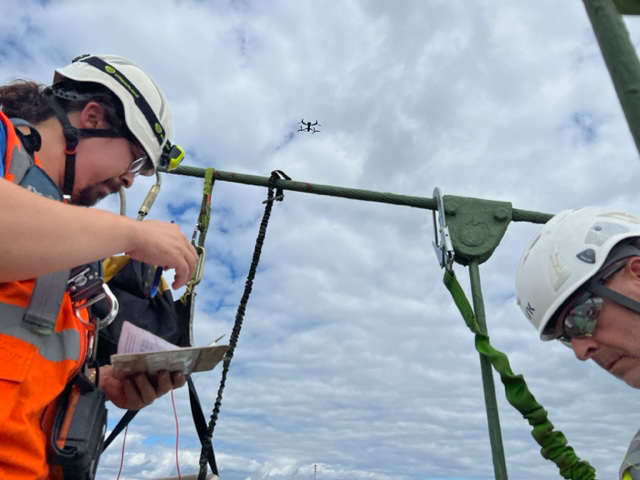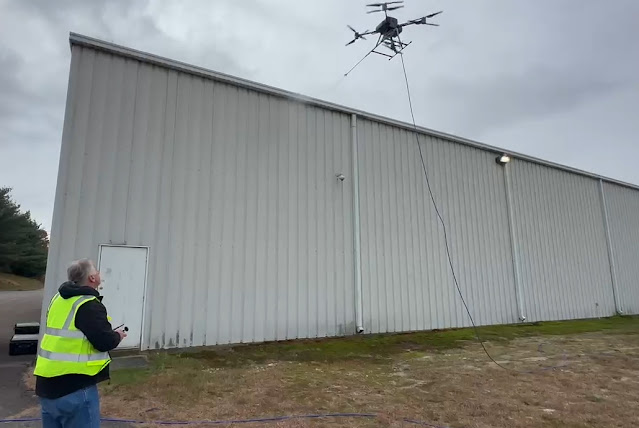Our crews often start their workday with the attitude that it's going to be a good one. However other people's careless decisions to drive distracted or speed through work zones can turn the day upside down – or even make it tragic.
That was the case for several contractor crew members working on a paving job in September 2023 on State Route 28 in Douglas County.
Site inspector Jimmy Ply said their team worked mostly at night when traffic volumes were lower.
The first work zone crash
On the night of September 21, 2023, a suspected impaired driver sped into the marked work zone and started a chain reaction collision that involved more than half a dozen vehicles.
There were nearly 20 people in the work zone that night. That time none of our crews were hurt, but it could have been much worse. Any collision in a construction area means work stops. Our team checks on the wellbeing of the crew, other drivers, and nearby pedestrians. They also alert law enforcement and request medical aid if necessary. If equipment is damaged or crew members injured, work for the night might be called off altogether. This can delay repairs and stretch out the project longer.
Ply recalls what it was like to get the phone call that night.
"When I got the call, I needed to check on the safety of my team and remain calm." Ply says he has been in a lot of work zone crashes during his tenure, so he tries to stay calm for the wellbeing of his team who are often shaken up from the crash.
Once Ply arrived on scene and saw paramedics were there to tend to the injured driver, (the only person injured in the accident)he called his crew off the roadway. That night shook up the entire crew, but they had a job to do. They went back out the following day to finish paving the highway - when it happened again.
A second work zone crash in less than 24 hours
This time, a driver was speeding through the work zone at night. They were also cited by WSP for being on their cell phone.
 |
| The driver of this truck crashed into other vehicles and ended up getting arrested in September of 2023 |
This is more common than you might think. In 2023, there were 231 distracted driver/inattentive citations issued in state roadway work zone crashes. In fact, according to the Washington State Patrol, the top three reasons for work zone collisions in 2023 (in this order) were following too closely, excessive speed, and inattention/distracted driving.
Our crews say they regularly see drivers looking at phones, texting, watching shows or using other devices while blowing past signs about slowing down or stopping – which puts everyone on the road at risk.
A few travelers who were struck in vehicles were sent to the hospital for evaluation and law enforcement arrested the driver.
 |
| A speeding driver crashed into other vehicles, including this one, on Sept. 22, 2023, on SR 28 near a work zone. The speeding driver was arrested, and travelers were sent to the hospital. |
The team was alarmed, but hoped the worst was behind them. Sadly, that wasn't the case.
A third crash – another distracted driver
Five days later, on Sept. 27, a driver tried to pass another vehicle, did not slow for the work zone queue and rear-ended another car, damaging multiple vehicles. The driver, who was injured but not critically in the crash, was speeding and was reported to be using their cell phone.
Three separate work zone crashes in one week is astounding. Even with advanced warning displays, signs and flashing lights alerting drivers of the upcoming work zone, people were still traveling way too fast, or simply not paying attention.
All the required safety measures were in place, Ply said. "This was poor driver behavior."
 |
| A driver, reported to have been using his cellphone while driving, crashed on Sept. 27, 2023, while trying to pass another vehicle near the work zone on SR 28, damaging several vehicles. |
It makes them frustrated because they are just trying to do their jobs and get home to their loved ones at the end of each shift. Three serious crashes in one week in their work zone made them all think twice.
Ply's crew says they hope more people become aware of the importance of work zone safety, slowing down, and staying alert. All three of these crashes could have been much worse. For crew members trying to improve the highway for everyone, witnessing crash after crash leaves its mark. Far too many of our workers have had close calls, serious injuries and even deaths in our work zones. It's hard to find a crew that hasn't had an injury or numerous close calls.
Our teams follow standard safety protocols for signs, lighting, traffic control set up and other safety considerations. In some cases, we hire the Washington State Patrol to do additional work zone emphasis patrols to address people who may be speeding in our work zones or driving under the influence – which puts everyone at risk.
Another thing you might notice in these three crashes, is that it's not just road crews at risk in work zones. Nearly 95% of people injured in work zone crashes are drivers, their passengers, or nearby pedestrians. It is in everyone's interest to pay attention and drive safely in work zones.
For our crews, the work zone is their "office." As you travel through their office this summer, do it in the way that you would show the same respect as you entered your doctor's office, your kid's classroom, or your lawyer's office.
Oh, and please be kind. These workers are out there for you, smoothing the roads that take you home. They deserve to go home, too.









